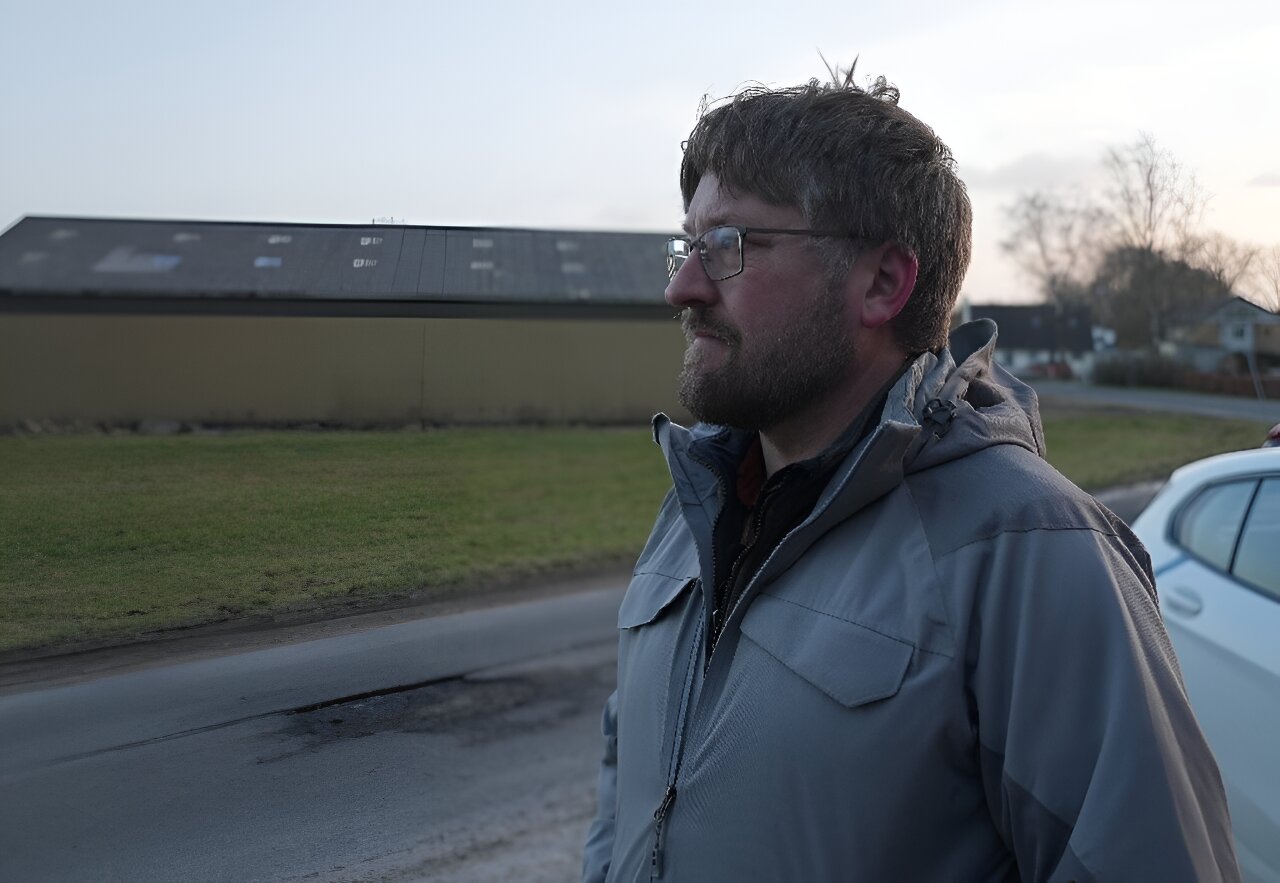“Three to six million cubic meters of soil, clay, contaminated soil,” said Jan Christian Jensen, a resident of Orst.
× close
“Three to six million cubic meters of soil, clay, contaminated soil,” said Jan Christian Jensen, a resident of Orst.
A small village in western Denmark is facing an extraordinary existential crisis. Landslides of contaminated waste are hitting local communities and nearby rivers.
“From that hill comes 3 to 6 million cubic meters of earth, clay, contaminated soil, all placed there by the companies that were there,” said Jan Christian Jensen, a resident of Orst. (47) is angry.
The ordeal began on December 11 for the village, a close-knit community of 45 neat brick houses.
That’s when Nordic Waste, a company specializing in contaminated soil remediation, announced that land was sliding at its hillside facility near the Alling River.
The company blamed heavy rains after Denmark’s wettest year on record.
The facility’s waste primarily comes from mink farms in Denmark, which have been ordered to close due to the coronavirus pandemic, as well as some waste imported from Norway.
The problem escalated quickly.
Initially, the soil was advancing at a rate of 9 to 10 meters (30 to 33 feet) per day, but pressure from the shifting ground gave way to secondary roads.
All but one of the buildings in the Nordic Waste then collapsed, allowing the mud to flow freely.
A square kilometer perimeter was built around the site and roads were closed to traffic.
Eight days after the announcement, Nordic Waste abandoned efforts to contain the mess.
The nearby city of Landers immediately stepped in to pick it up.
“We had to instruct the contractors to continue using large machinery on site to avoid contaminating everything,” Landers Mayor Torben Hansen told AFP.
His top priority was to protect the local river from pollution and prevent Orst from being wiped off the map.
So far, he appears to have been successful, with daily soil and water samples showing no signs of contamination.
Who will pay?
However, the area now appears to be a huge construction site, and several large catchment areas have been built to collect rainwater.
The mayor is furious about Nordic waste and the city of Randers does not want to fund the cleanup.
“In the first few weeks the municipality spent 100 million kroner ($14.4 million) and now we want the company to pay,” Hansen said.
The company, which was declared bankrupt on January 22, is a subsidiary of the USTC holding company, owned by billionaire Torben Ostergaard Nielsen, one of Denmark’s richest men.
“Everything has been carefully managed and we have never operated without the necessary permits,” USTC Director Nina Ostergaard Boris said.
Engineering services consultancy Kawi estimated clean-up costs at SEK 2.2 billion and stressed the importance of ongoing work to build embankments to protect villages from “mud avalanches”.
Denmark’s parliament has already allocated 205 million kroner.
“If we don’t do anything, within a year or two the entire city will be covered in five to 10 meters of mud,” Jensen said, citing the Kawi report. “It took me a few days to figure it out.”
Neither Jensen nor his neighbors ever imagined they would be hit by such a catastrophe.
“It could have been prevented.”
“This type of landslide is completely unique in Denmark” and is entirely the result of human activity, said Christian Svennevig, a geologist at the Geological Survey of Denmark and Greenland (GEUS).
“The public discourse is that the landslide was caused by this very wet year in 2023, but it started much earlier in 2021, during a relatively dry period,” he said. I can see that.”
“It’s not caused by climate factors. It’s actually caused by the landfill itself, where the soil is being put into this old clay pit,” he said.
Initially, land movements were small and unreported.
“If the decision-makers involved in this issue had the level of knowledge that we have now, we might have been able to prevent that by not putting the landfill there,” Svennevig said.
“As the landslide was progressing, mitigation efforts could have been initiated to stop it.”
At the end of January, Jensen and his neighbors were allowed to visit the site.
“Our understanding is…that we are not subject to waste,” he said, sounding relieved.
But questions remain.
“Are you okay here? What’s in the dirt?” Jensen asked.
The government has launched an investigation to determine responsibility.
